With colleagues, we often discuss the elements that make a restaurant pleasant. Is it taste? Hospitality? Experience? The complexity reached by the restaurant industry over the past twenty years makes it impossible to offer a unique answer and, even if this existed, it would never be the same for everyone. Even the same person might want to relax one time, enjoy tasty dishes then next, and then listen to all the meta-cooking details given by a chef the next day. Then every time it’s Mugaritz that makes everything clear: the restaurant that thrills you the most is the one that follows its own personal route; the one that avoids replicating, even if only in a distant way, dishes and styles seen elsewhere.
For this reason, the establishment opened in March 1998 by Andoni Luis Aduriz is the most dividing and controverted there is, because he has always worked to unsettle the guest, to instil doubts, demolish every certainty, which is the only possible premise to open new roads. These are concepts that the Basque chef recently expressed in a very clear way in the preface to “Vanishing Point” (published by Planeta Gastro), a volume in which the entire creative process of this outpost 20-minutes from San Sebastian is summed up.
Andoni explains that the point of view he aims for is aerial, perpendicular, like the one of birds; it’s not the frontal one of common mortals, but a constant escape from orthodox lines of thought, a poetic built «with the aid of the tamers of kombucha, the acrobats of enzymes, the tightrope walkers on the edge of perplexity, the jugglers of impossible bottles». A place that aims for freedom of taste, searching even for «outrage».
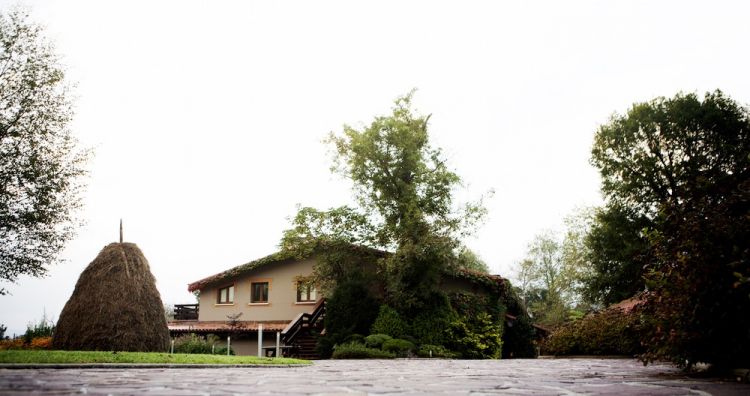
Mugaritz is the sum of two Basque words: muga, that is to say "border" (the restaurant is halfway between two cities, Errentería and Astigarraga) and haritza, the "oaks" that surround the farmhouse (photo Oscar Oliva)
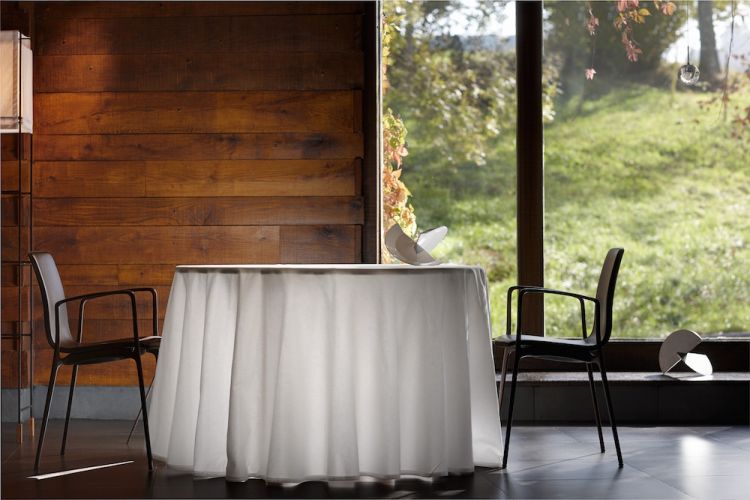
The staff comprises 75 people, serving 16 tables, with a number of guests between 32 and 56, one of the highest ratios in the world (photo Jose Luis Lopez De Zubiria)
Puntos de fuga is «a manual of conspirers» that generates a shock in lazy minds, through a series of concepts that results from the 15K hours spent next to artists, botanists, anthropologists, sociologists, actors, musicians, neuroscientists, chemists. A collection of questions, not answers. A book that in some parts overcomes the power of the restaurant itself because it is clear, the chef’s right arm Ramón Perisé confesses before the lunch begins, that «ideas here are often faster than the tools we have to accomplish them».
Luckily you then sit by the table, in a journey of 25 dishes and 25 glasses (Dembora, the high-end pairing) included in the only tasting menu for 2019, the result of 4 months of the chef’s and his staff’s work in the test kitchen. We sat there for 4 hours, without suffering whatsoever. A magnificent experience, of which we took some notes about what struck us the most. Here’s a fragmented report, in coherence with the a-systematic sequence ofMugaritz.
MENU. To create a bridge with other worlds rather than gastronomy, words like sous-vid, confit or quenelle are never mentioned in the menu. Instead, the words used are “choice”, “vanity”, “submission”, “liberation”, “pleasure”. It’s an invitation to «open the mind, not just the mouth». The tablecloth is a set for infinite possibilities.
TEXTURE OVER FLAVOUR. «In the long run, flavour tires more than texture», Perisé explains at the beginning of the meal. Only at the end we got the meaning of these words. The 2019 menu alternates very traditional moments, amables (the grilled calamari or the American-style lobster) and moments purely focused on technique, almost abstract (the fake kidney Alubias Dulzura, or Azar, a velvety geometry, see the photos below). Gelatinous, oily, grainy: the main courses are often served in mono-texture, following the model of Japanese cuisine, with which Andoni established an affinity a long time ago. Texture wins over flavour.
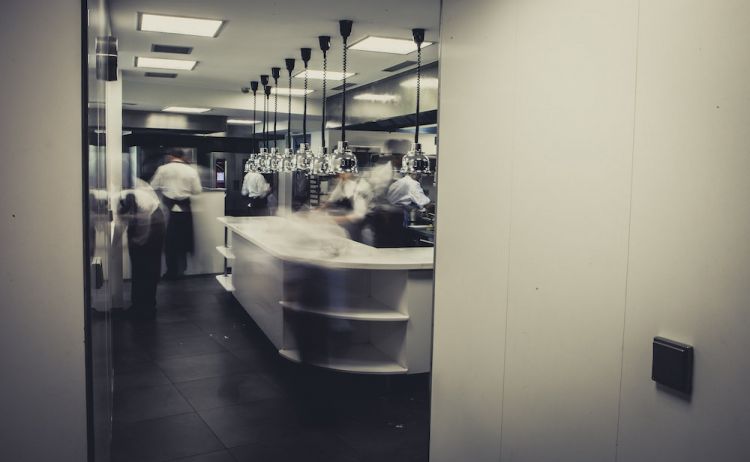
Every year there’s an 80% turnover of the staff. The hired people are all ex-interns (photo Oscar Oliva)
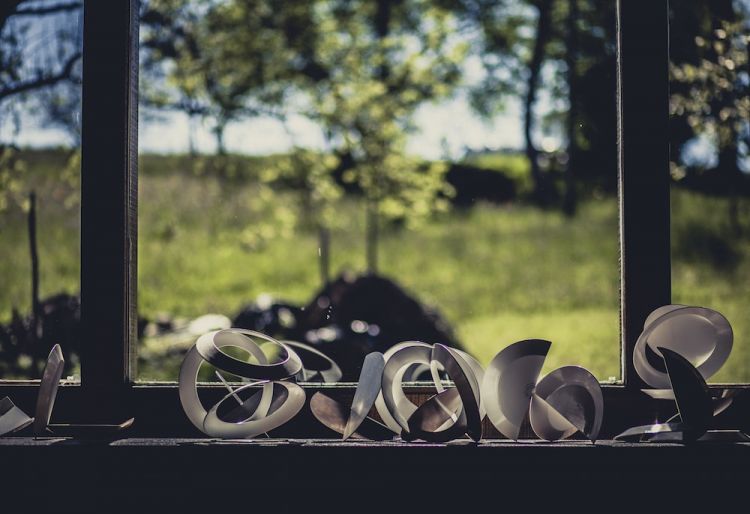
The plot at Mugaritz is signed by Andoni, the script by a team formed by Ramón Perisé, Javier Vergara andJulian Otero (foto Oscar Oliva)
ACTIVE CLIENT. As often the case, the client at Mugaritz is not a victim you must stuff with food and concepts. Clients are alive, «a sourdough», maître Francesca explains at the beginning of our journey, «that must be fed so as to leave it free to express itself». For this reason, they immediately serve an ironic booklet-dictionary with lots of suspension points. Clients will fill them themselves, because «What’s important is not that Mugaritz is capable of being a creative restaurant, but that it can make guests creative».
WINE. When dining, an invisible wall emerges, almost always. It’s the world that separates wine from food, the glass from the dish, the sipping from the eating. Wine, sake, spirits, fortified wines or kombucha (the non-alcoholic pairings would deserve a separate article) are promoted from simple complement to crucial key, sometimes as an ephemeral quote, sometimes as the main ingredient, sometimes as the main object of the rhetorical structure.
DESSERT. With desserts Andoni shows another fascinating goal: defeating the monotonia postrera. Why does one necessarily need to end with sugar? Why replicate the centennial model of fine dining and perhaps not follow the Japanese, who spread sweet notes along the entire meal? The last two dishes served at Mugaritz were: Rice cake, with rice fermented in koji and a Sponge cake with beef tendons. Another stunning peak, vertigoes as the premise for the sublime.
And now the images.
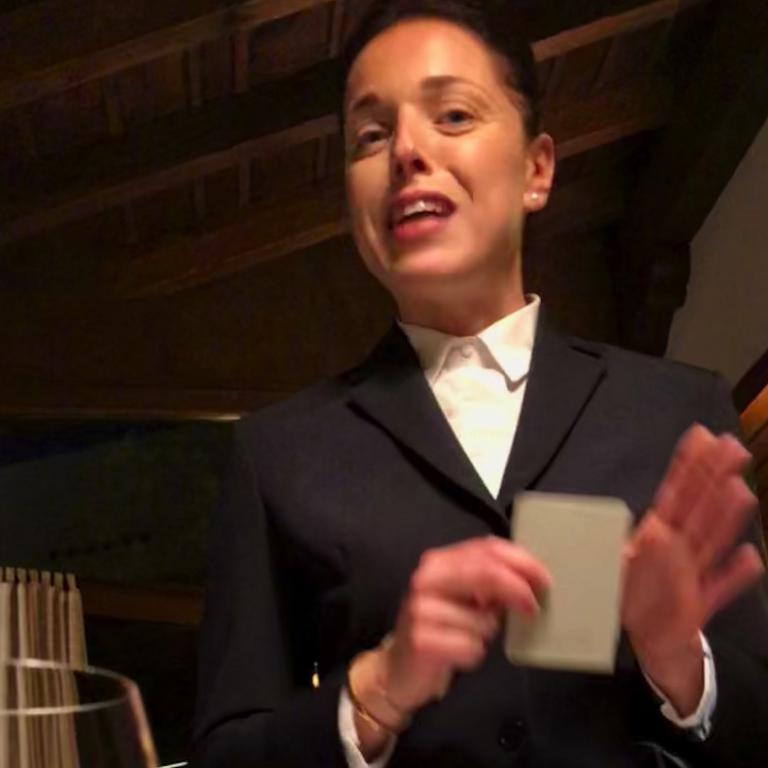
Francesca Cane, from Bra, in Piedmont, maître at Mugaritz

Before the meal, every guest receives a small dictionary, deep and ironic, with some parts curted by the client "who must not be a victim", they explain, "but take active part in the experience"

The drinks were curated by the very well-prepared Haemin Song, from Korea
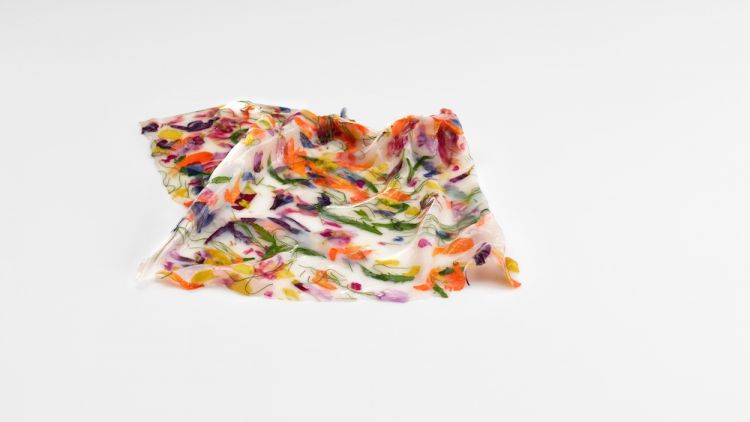
Pañuelo-suspension. It’s a handkerchief made with a paste of calamari with flowers and herbs. Brushed with a floral sake. Photo José Luis López de Zubiría
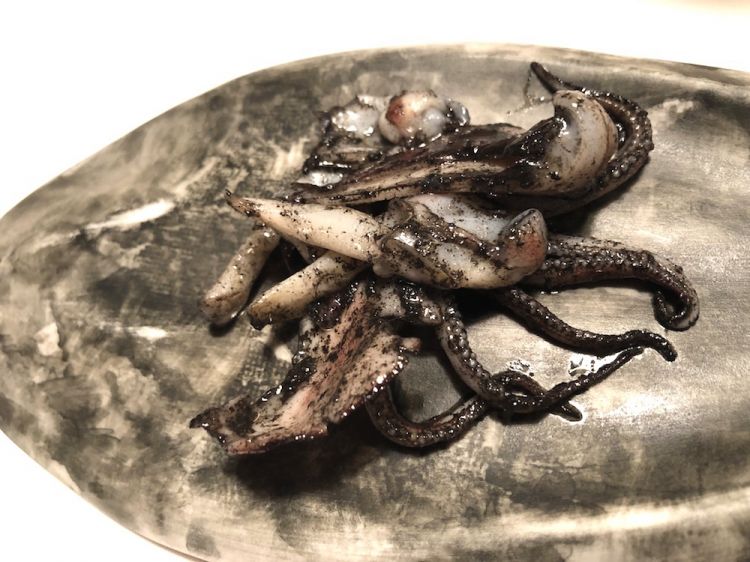
Prosecucion: summer calamari. Right after the "napkin", they serve some very classic grilled calamari. Texture and then flavour
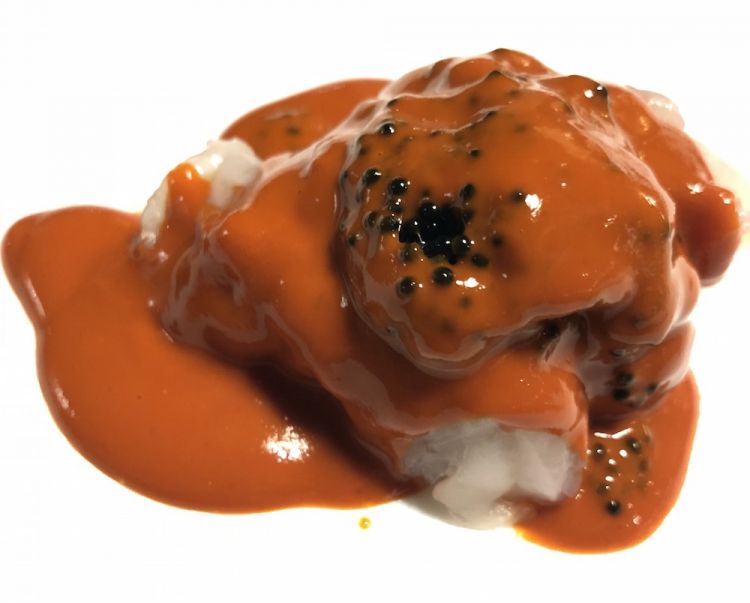
Gusto: lobster in the American style. Raw lobster, lobster roe and bisque of carabineros
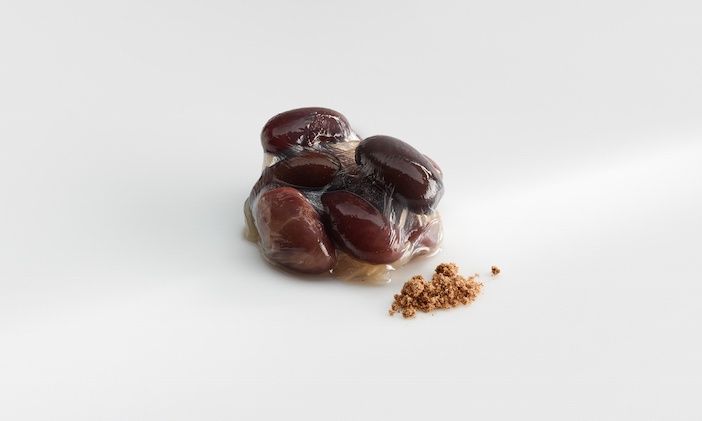
Alubias Dulzura: dark skin. Beans (injected with pectinasa) and mushrooms after what remains of a classic kombucha fermented for one day, and powdered cinnamon. It’s a play that reproduces the flavour and texture of kidneys, but vegetal. Photo José Luis López de Zubiría
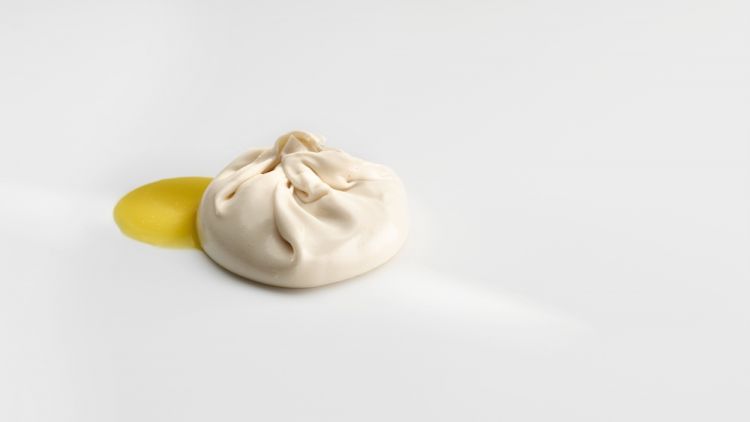
Saco tiempo. Pine nut peel filled with pine nut milk, inspired by burrata. The yellow part is a sauce of salted cod kokotza, slightly smoked. It’s yet another happy evolution of the taste alchemy created by salted cod and pine nuts, first explored back in 2009. Photo José Luis López de Zubiría
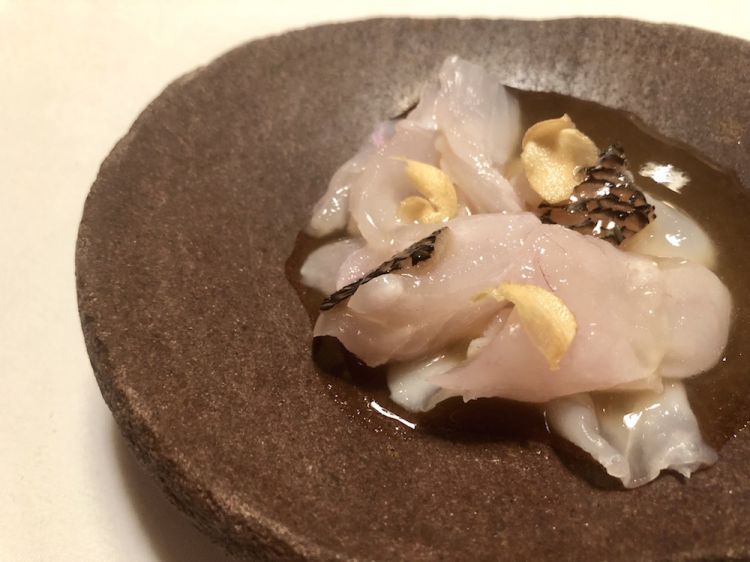
Sashimi of grouper with fried garlic
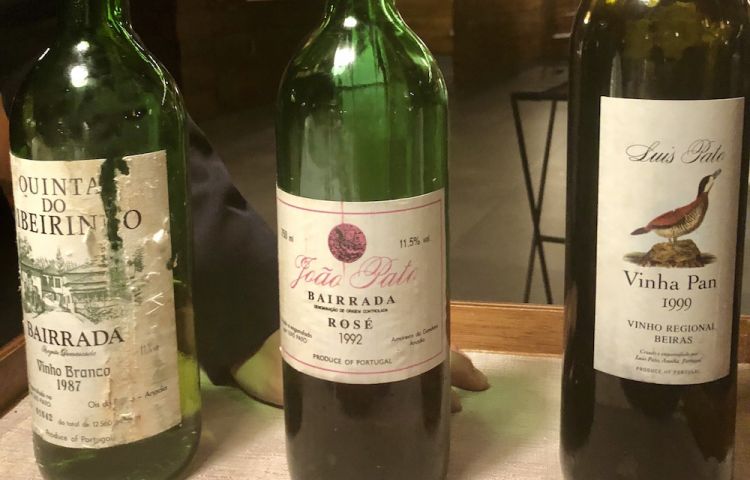
The next dish is introduced by as many as 3 wine pairings from the same winery: 1987 white, 1992 rosé and 1999 red from Luis Pato from the Bairrada region in Portugal
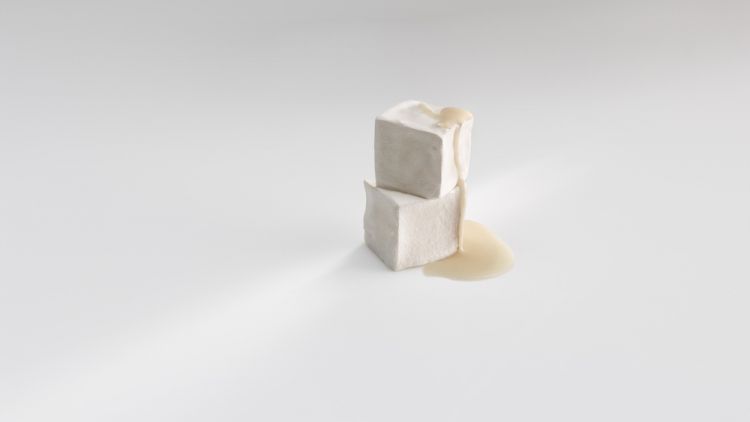
Azar, velvety geometry: Cube of mould (made by injecting penicillin, in the style of Roquefort), filled with liquid ham and cheese, in the style of a croqueta. Photo José Luis López de Zubiría
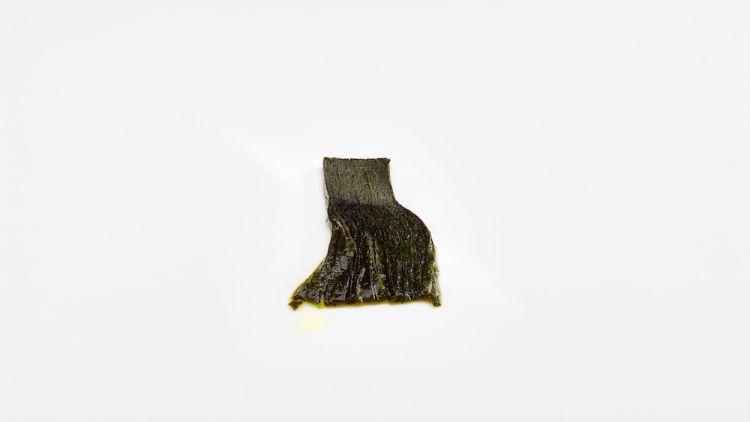
Nori Simbiosis, stacked time (terrine of nori seaweed and pork). PhotoJosé Luis López de Zubiría
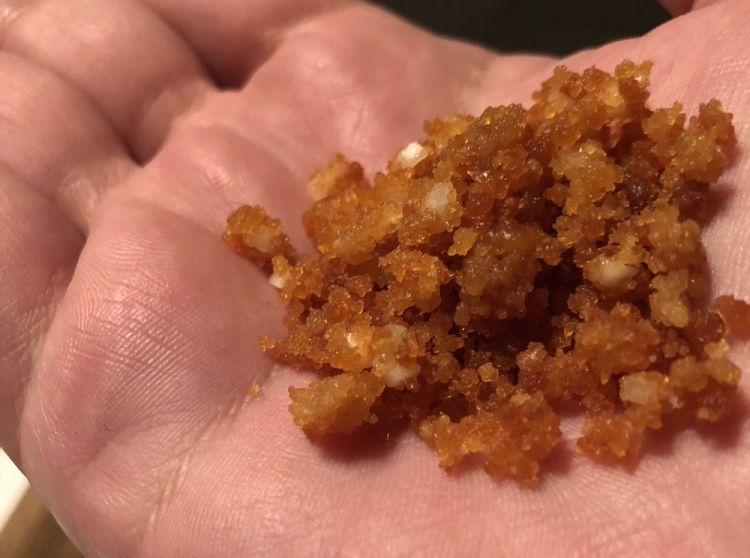
Gesture, crumbs of octopus: fried octopus roe, onion and pepper. Guests are invited to eat this from the palm of their hands
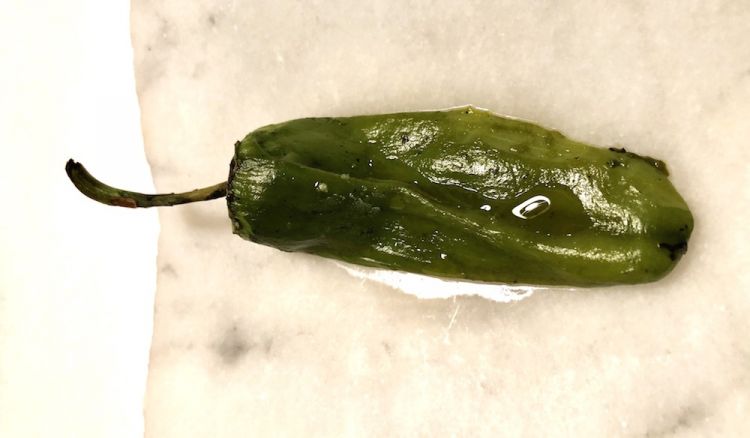
Estados verde: green pepper, the significant aromatic note of Cabernet Franc and Cabernet Sauvignon...
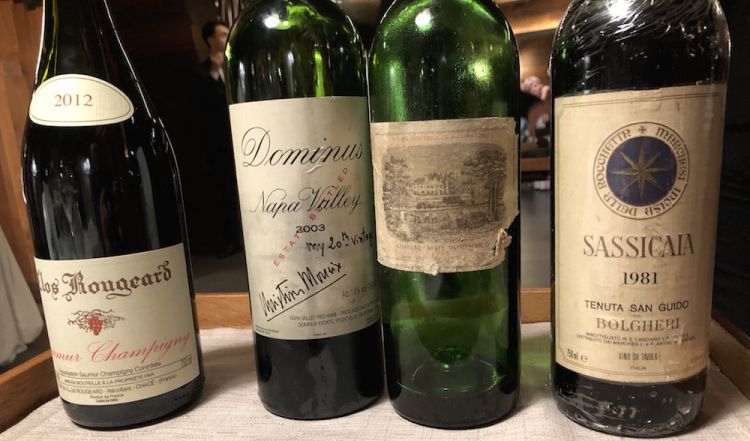
...the wine pairing with green pepper is a memorable list of 3 wines, distant in time and in space, animated by that strong note. And such wines: Clos Rougeard Saumur Champigny 2012 (Loira), Dominus 2003 (Napa Valley), Château Lafite 1973 (Bordeaux) and Sassicaia 1981 (Tuscany)
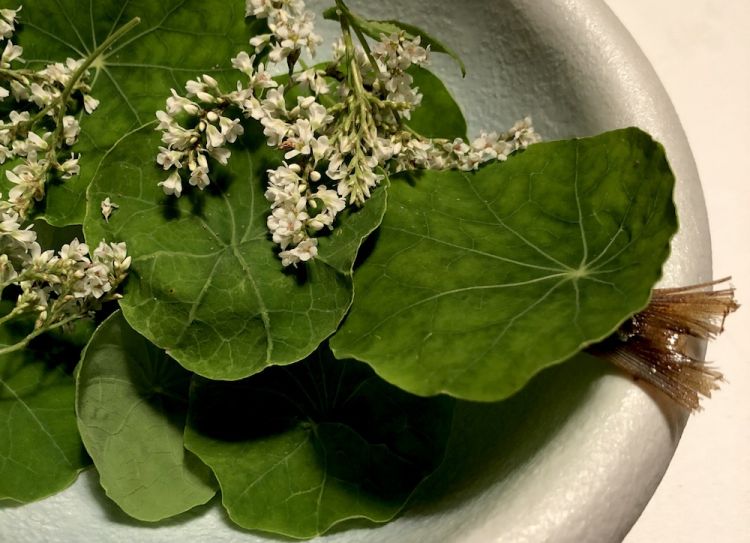
Under the salad leaves, there’s a surprise...
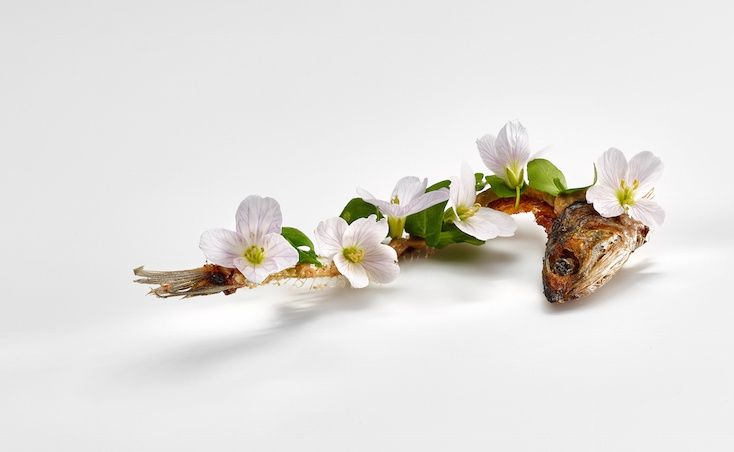
...raspa, fishbone: roasted sardine with cream of chicken liver. Photo José Luis López de Zubiría
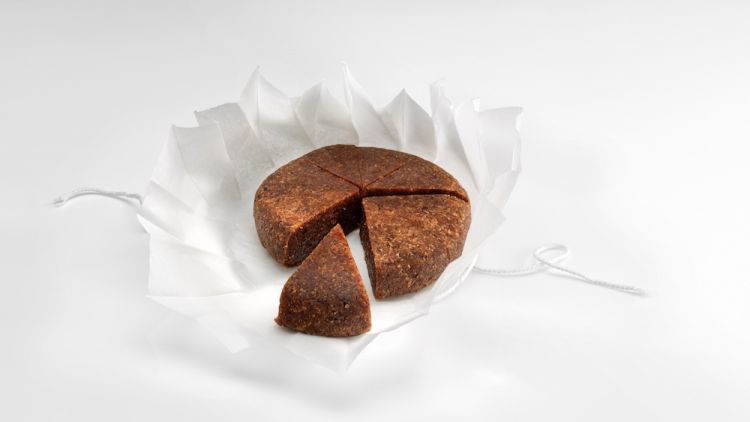
Tributo: a cake of rice fermented in koji with acacia honey. Photo José Luis López de Zubiría
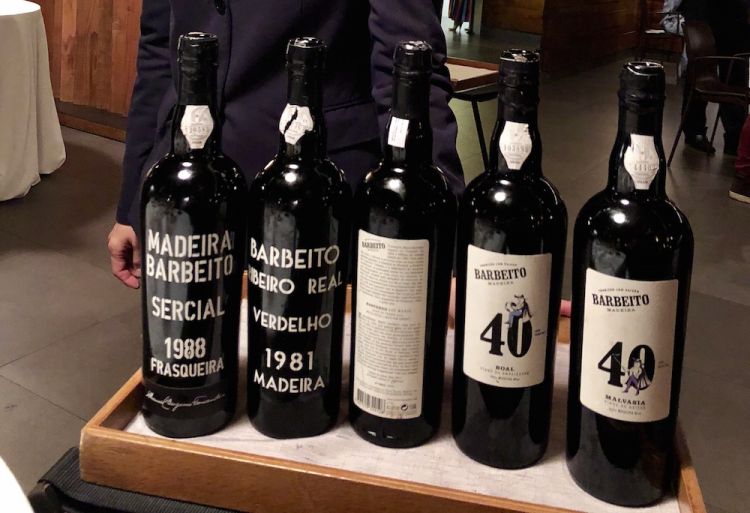
... but then again the real protagonist of this “dessert” is the wine pairing: 5 fortified wines from distant vintages, served in a sequence of increasing sugar content
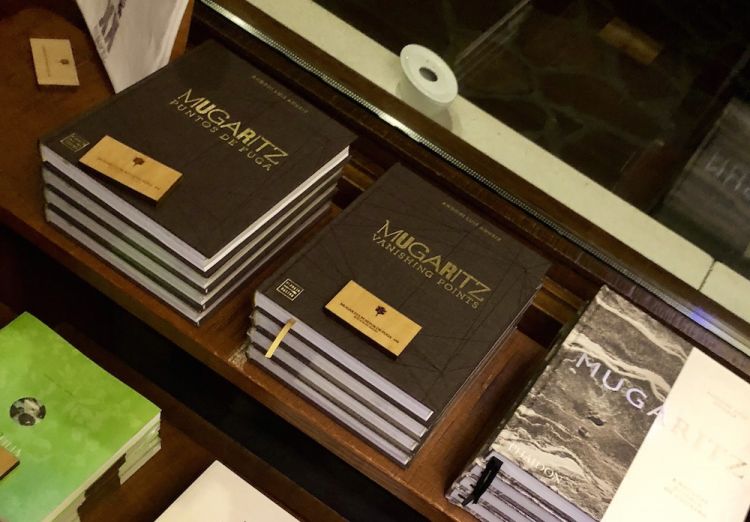
The creative process at Mugaritz is masterfully explained in the book just published by Planeta Gastro Vanishing Points, with photos from Per-Anders Jörgensen and José Luis López de Zubiria, content fromSasha Correa and Raúl Nagore, artistic project Lotta Jörgensen/Fool Agency
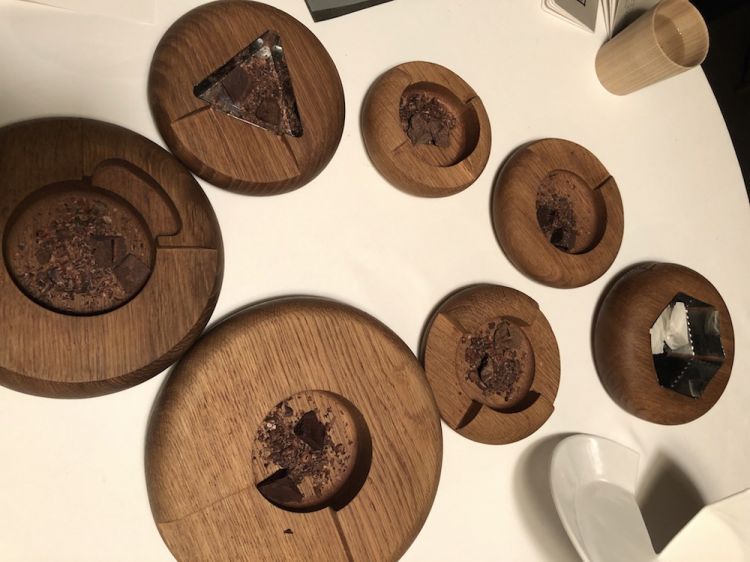
The tasting menu ends with 7 tastings of Chocolates, from Tanzania, Colombia, Peru, Bolivia...
Aldura Aldea, 20
Errenteria
Basque Country, Spain
+34943522455
Tasting menu only, from 220 euros
Pairings:
Laztana 220 euros,
Dembora 330 euros,
Esencia (non-alcoholic) 110 euros
Closed the entire day on Monday, at lunchtime on Tuesday and in the evening on Sunday
Translated into English by Slawka G. Scarso